Originally written for the class, "History of Modern Architecture" during my master's degree program at the Savannah College of Art and Design.
—
An Invisible Home: The McCormick House.
One of only three private homes in America built by Mies van der Rohe, the McCormick House is nearly invisible. Yet, the architect's career was full of monumental achievements that became iconic. Conceived with modular ideals, the house was designed for business partner Robert McCormick in 1951, followed by a story of hope, change, and vacancy until a fine arts guild saved it forty years later. The McCormick House is a perfect representation of Mies van der Rohe's aesthetic and design principles, but this undiscovered, modern house celebrated the opportunities for revolution in the middle-class architectural form, which was unusual at the time.
Born in Aachen, Germany, in 1881, Ludwig Mies van der Rohe learned his trade from great architects in Berlin—including Peter Behrens during the conception of the AEG Factory—and began designing residential houses one could hardly recognize as his work today. He eventually became a staff architect of Behrens, alongside Walter Gropius and Le Corbusier.1 Foreshadowing his career three decades later, Mies entered the Berlin Turmhaus-Aktiengesellschaft competition in 1921, conceptualizing the Friedrichstrasse Office Building. The plan was abstract and, according to Mies, allowed him to "investigate the use of glass as an exterior enclosing element."2 His design was a precursor to Mies's constant use of the material, becoming a gateway between interior and exterior environments. A career of architectural normalcy evaporated in 1929 when Mies created the German Pavilion at Barcelona International Exposition. It is a single-story open volume full of glass and polished stone–most notably huge slabs of polished gold onyx doré. When the King and Queen of Spain inaugurated his newly completed Pavilion, Mies began to see notoriety, accolades, and invitations to future exhibitions.3
Only a year later, Mies became the director of the Bauhaus—the leading school of architecture in the arts—but it wouldn't come without its challenges. The political landscape of Germany was changing, but Mies ran his school through his views: that of an architect, interested in problems of form, not those of politics. Not everyone agreed. The students of the Bauhaus and its "Masters" like Kandinsky and Klee all had varying political views at the time and expected, if not demanded, Mies to address them. However, Mies was adamant about the teachings of architecture and design and asked all current students to reapply and show their level of commitment to studying at the Bauhaus.4 Mies had to endure the Nazi's search for documents linking the school to the communist party and general hostility to the creative culture of the school ultimately resulted in its closure. Mies went to the headquarters of the Gestapo, requesting to speak to the head every other day for three straight months. Finally, Mies got to meet with him, and the stated reason for the school’s closure was Kandinsky's political stance. Mies agreed to take responsibility for Kandinsky at the cost of his own freedom, and the school was allowed to reopen. Mies requested that his fellow Masters bring champagne to celebrate; however, not to celebrate the Nazis allowing the Bauhaus to reopen, but instead to celebrate the integrity of the school at which point they closed the Bauhaus on their own accord in 1933. Years later, while still a German national, the Gestapo even arrested Mies himself in August of 1938. Using his brother's passport, he was able to escape to the Netherlands5 and change would become his savior and his gateway to success.
Regardless of everything happening in Germany, the transition to Chicago wasn't as straightforward as one might think. The Armour Institute of Technology in Chicago presently called the Illinois Institute of Technology wanted to create an architectural school, and the task fell on John Holabird and Jerrold Loebl, Chicago architects and Armour Institute committee members. A colleague and architect named David Adler recommended Mies van der Rohe, and after looking at photographs of the Barcelona Pavilion, Holabird and Loebl agreed. However, at the same time, Harvard offered him a possible chair in Cambridge, and the Museum of Modern Art wanted to discuss a new building with him. Armour's offer seemed a distant third. The Museum of Modern Art opportunity fizzled out, and Harvard decided to propose two candidates for the role, Mies and Walter Gropius. Mies was not happy as he considered himself to be the superior architect to Gropius. Mies stated he would accept the appointment but not accept being a candidate, and withdrew his name from the list of possibilities.6 Regardless of Harvard and the Museum of Modern Art, Mies was intrigued by the opportunities in Chicago. He made many requests to the Armour Institute, most notably to reconsider the staff and envision an entirely new campus in a new form with the changing architectural times of Modernism. Armour accepted, and as a result, he arrived in Chicago on August 29th, 1938, a month after his arrest in Nazi Germany.
In relative terms, Chicago was a new city, made especially new by the Chicago fire of 1871. It was also a city built by middle-European immigrants working hard to match New York's commercial prowess. So it was not surprising that Mies van der Rohe fit right in, and architecture became a part of the city's vernacular. The minimalist elegance of his architecture came to represent America's cultural maturity.7 Mies van der Rohe brought two Bauhaus professors with him to Armour, (Ludwig Hilbersheim and Walter Peterhans), so when he landed in Chicago, he immediately established control of a design department. Mies’s students were renowned for mastering the detailing of construction methods, designing structure, and showed extraordinary drafting skills. It was as if an American Bauhaus had been melded with a modernist version of the École des Beaux-Arts.8 Mies educated students and re-envisioned a center for architecture and design with beautiful structures like Crowne Hall. Considering the hostile environment he left in 1938 Germany, no one but Mies van der Rohe could have arrived in Chicago with nothing and yet created buildings like the 860-880 North Lake Shore Drive Apartments in only twelve years.
While success followed Mies to Chicago, there was more to this era than just the "Miesian" aesthetic—he evolved from a European architect. Only seven years into his Chicago career, he met real estate developer Herbert Greenwald. While fascinated with Mies, Greenwald became his client for an apartment building on Chicago's south side. This relationship with a commercial vendor allowed Mies to get his designs mass-produced while continuing to explore and find opportunities for success. Greenwald led him to the prestigious 860-880 North Lake Shore Drive project, a glass and steel set of apartment towers on Chicago's Gold Coast. Beyond its aesthetics, the project would become a precursor to stackable, repeatable units that would intrigue Mies and his partners later in a different type of structure. A powerful family-run management company owned half of the land for the site, and Greenwald selected a Vice President and a member of this powerful family—Robert Hall McCormick—to oversee the project.
The Barcelona Pavilion introduced Mies—and the world—to the open floor plan concept. Instead of a volume divided by walls, this new way was a radical departure from a view of the typical domestic environment. Instead, the walls were invisible, and the open floor plan was a space of contemplation, purposely organized and free of distractions.9 Another open-plan by Mies was the Tugendhat house in Brno, Czechoslovakia. Although not as widely publicized as the Barcelona Pavilion a year earlier, the Tugendhat House used this open aesthetic in a family home, featuring a floor-to-ceiling, eighty-foot long glass wall, and freestanding onyx partitions in a 10,000 square foot space.10
One of Mies van der Rohe's most iconic open floor plans began when he met a single doctor named Edith Farnsworth at a dinner party in Chicago in November of 1945. Having great charm and charisma, Mies grew close to Farnsworth, who requested a custom-built weekend home to escape the loneliness of the city around her.11 The site for the home was situated on the banks of the Fox River fifty miles outside of Chicago, land coincidentally purchased from Robert R. McCormick. As planning for the house began, Edith asked Mies what he envisioned for the material of the house. Mies told Farnsworth, "I would think that here where everything isbeautiful, and privacy is no issue, it would be a pity to erect an opaque wall between the outside and the inside. So I think we should build the house of steel and glass; in that way we'll let the outside in."12 With Farnsworth’s support, Mies's determination for an open floor plan took a decisive step forward.
Historical context, however, was very influential. World War II was ending, and experiments in cheaper home building proliferated as housing demand rose due to returning Gis and the baby boom generation.13 The availability and affordability of automobiles created an opportunity to branch out of the cities. Suburbia exploded in growth. Marcel Breuer, Le Corbusier, Buckminster Fuller, and many others had already conceptualized ideas of prefabrication but most were largely based in wood.14
Frank Lloyd Wright conceived the Jacobs House in 1937 as what he referred to as a Usonian house. Wright wanted to show that well-designed houses could be replicated for the mass market. Cost-saving features included sandwich-wall construction: a prefabricated wall with interior and exterior sheathing and insulation meant to be bought by the foot. This design economized but still reflected Wright's priorities of a pinwheel plan, total design, domestic privacy, and orientation to nature. Wright’s ideas suggested ways to help simplify the design and build process, a cost-effective way to benefit families of the future. Faced with criticism from his colleagues who called the Jacobs House a stunt instead of a principle he would repeat, Wright said, "...to build these houses is the most important thing in our country for an architect to do, I pledged myself to do forty of them. We are now on our twenty-seventh, and I want to assure you that there is nothing more interesting or more important in this world today than trying to put into the houses in which our typical best citizens live something of the quality of a genuine work of art."15
Arts & Architecture magazine's Case Study Houses program sought similar innovation in inexpensive steel-framed modernist housing on the west coast. Seeking to open a new chapter in the design of two-bedroom with two baths houses for servantless families with one or two children, Charles and Ray Eames designed their own No. 8 house in Santa Monica, California. The home was technologically casual, simple, and served as both a studio space and living quarters. Completed with a majority of easily-available, inexpensive materials, including industrial sash windows, Arts & Architecture Magazine profiled the house to reiterate the program's creed that models of well-designed homes for an average family benefitted architecture and filled a social need.16 The most famous Case Study House was number 22, designed by Pierre Koenig. An L-shaped plan built on slab concrete, Case Study House No. 22 served as a photogenic marvel built on a hillside overlooking the extending city of Los Angeles. It captured the imagination of the world because of an iconic photo by Julius Shulman featuring the wonder and possibilities made possible by the home.
Back in Chicago, Greenwald, Mies, and McCormick (fig. 2) were about to join this architectural conversation about well-designed, inexpensive house construction. They conceived a steel-framed house prototype as an opportunity for middle-class, suburban America, allowing for the feeling of customization but utilizing the cost-effectiveness of mass-produced materials and modular design elements.17
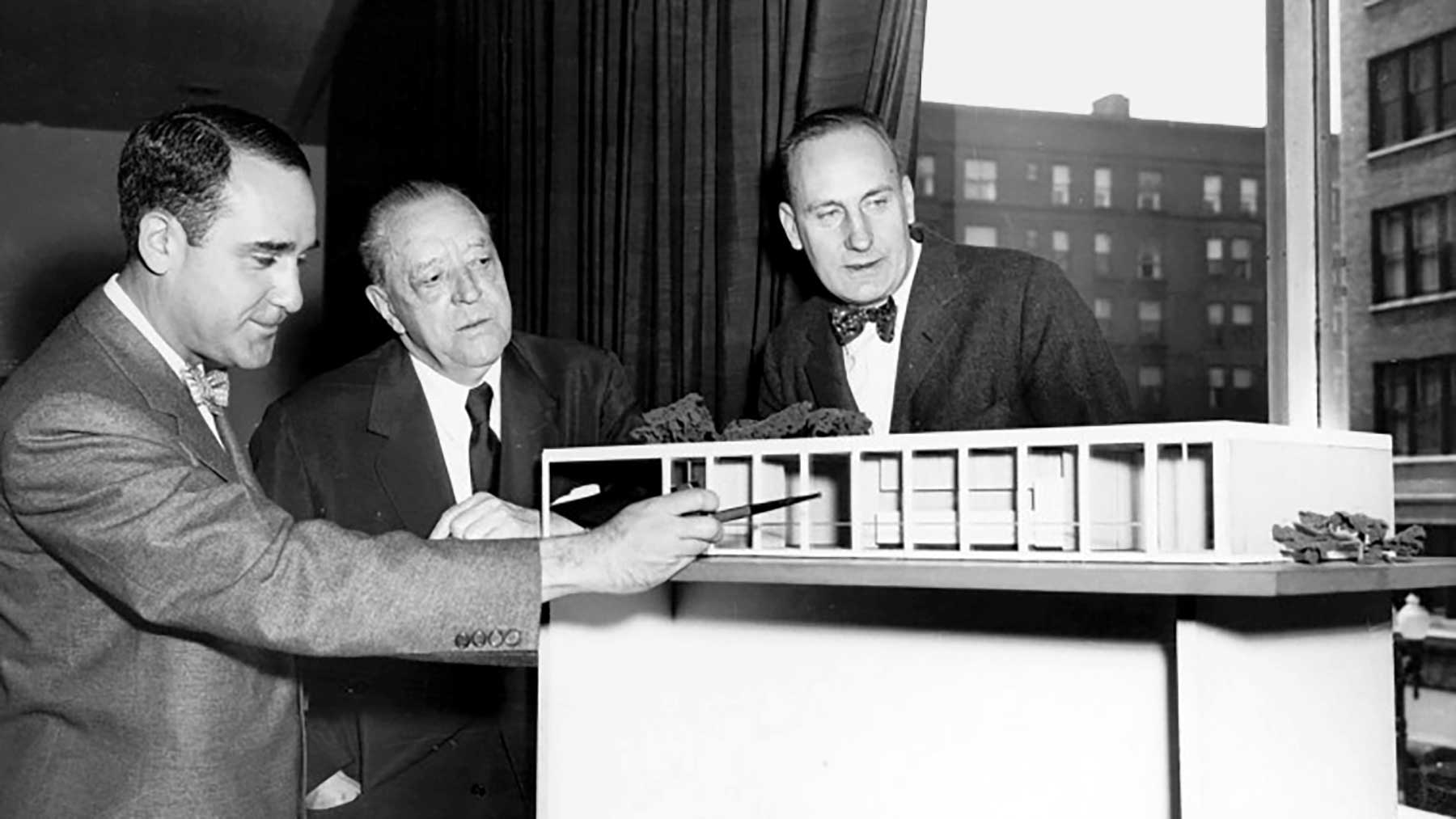
Fig 2: Herbert Greenwald, (left), Mies van der Rohe, (center), and Robert McCormick, (right), studying a model of the McCormick House.
Robert McCormick commissioned Mies to build a house for himself and his new wife Isabella. Although freestanding and single-story, the goal would be to use the modular, repeatable units of the famed 860-880 North Lake Shore Drive apartments as the prototype. Standing next to him on Lake Shore Drive, Robert McCormick recalled Mies looking upwards during the build of 860-880, stating his desire to build the same grid, but horizontally instead of vertically. McCormick told Mies, "I need a house; why don't we?"18
Located outside of Chicago in the picturesque suburban community of Elmhurst, Illinois, the houses reflected both the Farnsworth house (fig. 3) and the 860-880 North Lake Shore Drive apartments (fig. 4), specifically with its open floor plan and full-height glass windows within a steel skeleton. The style of the McCormick House is uniquely "Miesian," a phrase used to describe his modernist aesthetic referring to minimal decoration, an emphasis on simple structural articulation, large open spaces, wood floor painted black, and generous glass fenestration. The house comprises two volumes formed by a grid of 5' 6" steel I-beams (fig. 5) and glass panels offset at a ninety-degree angle pivot point. This 66" module was selected because, at the time, it was the cheapest to produce. These bays consisted of the exact same window design used in the 860-880 North Lake Shore Drive apartments, as were the mullions with steel I-beams turned outwards. Mies used these external I-beams as a decorative element that organized the aesthetic, and also as a celebration of American industry, and carried this concept over to the McCormick House. But the two offset volumes of the home were not identical. One volume comprised seven panels, and the other comprised eight panels overlapping in the center. Mies most likely did this to accommodate space for the couple's five children; however, it also shows the flexibility of the home's modular design, as the McCormick house was a prototype for a proposal of smaller, affordable mass-produced modular homes.19 The interior of the house was designed to be modular as well. For example, solid-core doors and walnut walls were attached to the floor and ceiling with cleats to make disassembly easy so different owners could reconfigure the plan.20

Fig 3: Farnsworth House, Plano, Illinois, 2022.
By adding the carport to the central axis, Mies makes the uneven grid of the McCormick House dynamically asymmetrical, so it feels balanced. The north (left) wing occupied the galley kitchen, children's bedrooms, a bathroom, and a play area. The south (right) wing occupied the parents' bedroom, bathroom, and the family living room (fig. 6). In addition, landscape architect Alfred Caldwell, a frequent collaborator of Mies's, used the large land plot to help create a park-like garden, bringing the picturesque surroundings inside the McCormick House through its glass walls. Mies had developed an aesthetic for designing a freestanding glass house surrounded by nature, enhanced by clean welds of the I-beams and painting the exterior white.21

Fig 5: McCormick House grid, 3D rendering.

Fig 6: McCormick House floor plan, 1951.
Unfortunately, Isabella McCormick's involvement with poetry developed into a romantic relationship with poet Allen Tate,22 and divorce forced the McCormicks to rent out the house for three years. In 1963, the home was purchased by Ray and Mary Ann Fick who lived in the house for thirty years for four of which, Ray was mayor of Elmhurst.23 In 1991, Elmhurst Fine Arts and Civic Center Foundation purchased the home to become part of the new Elmhurst Art Museum.24 When the home was going to be disassembled and moved to the new location a few blocks away, the surrounding landscape was so overgrown, the house was almost invisible from the street.25 Mies considered this natural growth the definition of privacy for his glass structures.
The house succeeded on many if not all fronts. It was horizontal, and therefore built in the way a majority of people lived in the 1950s. It successfully blended the elite International Style and the more popular ranch house form and featured such amenities as a full St. Charles metal kitchen, a trend at the time.26 At $45,000, the McCormick House was expensive for a house at the time, however, it was by Mies van der Rohe and was much less than the $70,000 Farnsworth house. The home was widely considered to be beautiful and had many well-known artists and architects visit, including Walter Gropius, T. S. Eliot, Robert Frost, and Marcel Breuer. 27 28 Functionally, the house suited the McCormicks. It provided a place to raise their children in a spacious environment created with Mies's artistic integrity. However, despite all its accolades, and its clear role as a prototype for modular home design, the house faced the challenge of the public and their willingness to see the same vision as Mies, Greenwald, and McCormick.
Initially, the dynamic between a male architect and a single female client in the late 1940s was built on mutual respect. However, while the house commissioned by Edith Farnsworth would become a modernist icon, Farnsworth and Mies's relationship would soon crumble publicly, bringing awareness and criticism to his working style. Decisions about privacy, the floor plan, and construction issues led to disagreements. By 1951—the same year the McCormick house began its design—Mies and Farnsworth had stopped speaking, and lawsuits became the story surrounding the house.29
Built for a different purpose, Mies conceived the Barcelona Pavilion with the same open floor plan ideals in which visitors could envision a living environment. Finished a year later, the equally impressive Tugendhat house was considered a showpiece, not a home,30 and Edith Farnsworth and her open weekend retreat weren't exactly what every family needed in the suburbs of the 1950s.
In addition to Frank Lloyd Wright's Usonian Houses and the Case Study Houses of Los Angeles, America had already been introduced to the concept of suburban idealism through Levittown, a quick-build community for returning soldiers conceived with different aesthetics. Mies's open floor plan for a home was a departure from this, and even the McCormicks had to convince him to alter the original plans and provide a door to the master bedroom of their home, which they did successfully.31 Decades later, speaking from a developer's point of view, McCormick himself said, "We didn't take into consideration this sort of design was ahead of the times, and people didn't want to live in a building like this."32
The ending of the Farnsworth relationship was full of public criticism, and conservative editorials were quick to enhance this agenda. One such article came from the editor of House Beautiful magazine, Elizabeth Gordon in 1953. Gordon was a fan of Frank Lloyd Wright, the American hero, and was exceptionally critical of Mies van der Rohe, a German national. In 1953, Gordon's article divided the architecture world with an editorial titled "The Threat to the Next America," accusing International Style architects like Ludwig Mies van der Rohe of moving America toward totalitarianism and communism by way of visual austerity.33 Because of articles like this, the critical dialogue surrounding the livability of a Mies home, at least in the popular press, became more common and influential.
While three families lived in the home, the livability issue resurfaced in 2019 when an artist named Claudia Weber lived in the McCormick house for two months as an “artist-in-residence.” Weber’s goal was to enunciate the effect of the house on her as she lived there. She felt the openness, the frigid winter months of the Chicago winter, and the floor-to-ceiling windows. Day in, day out, she experienced the volume, the dynamic asymmetry, and adaptation with openness. For two months, she lived every second of Mies's vision of bringing the outside in with the design, but her initial views weren't that of nature. "My state of being awake and asleep in the house has become as seamless as the inside and outside of it, divided by just a layer of thin glass." It wasn't until after her artist-in-residence project came to a close did she indirectly understand the point. "Even after living in the house for five weeks, I hardly know it. This might be due to the constantly changing soundscape it creates. Each weather and time of day translates differently across the building's structures and materials." In other words, she experienced exactly what Mies intended by letting nature provide the privacy needed for glass structures, and allowing the beauty of the outside to come inside the home.
As the public struggled to adapt to the open floor plans of the "Miesian" aesthetic, McCormick, Greenwald, and Mies's plans for a prefabricated community were struggling to get off the ground. The land initially selected for ten modular home designs based on the McCormick house was purchased to build O'hare airport.34 Regardless of that land, ultimately, the three couldn't gain a sufficient number of buyers, and construction never began. As a result, Mies's plans for prefabricated, modular home ideals would soon vanish.
After the modular concept of the McCormick House, Mies van der Rohe continued to build iconic structures such as New York's Seagram Building and Chicago's Federal Plaza. Looking back on his legacy, the nearly invisible McCormick House feels like a miss. Not at the hands of the architect but of America around him, unwilling to see the greatness in this vision.
The McCormick House was important because of its aluminum window framing and steel skeleton, and it illustrates a moment in time when Mies wanted to employ new technologies in a simple suburban house.35 While generally met with great success, there were moments of Mies van der Rohe's career that could have propelled him even further, and the McCormick House is one of them. The nearly invisible McCormick House never met the same notoriety as Mies's other structures. Still, its life continues by operating as a free museum open to the public, teaching others about modular homes in the 1950s and the architecture of Mies van der Rohe.
Fig 7-11: Using the plans Mies van der Rohe gifted to the Museum of Modern Art in New York, these three-dimensional renderings were created to show the process of the
skeletal structure and build of the volumes of the McCormick House.
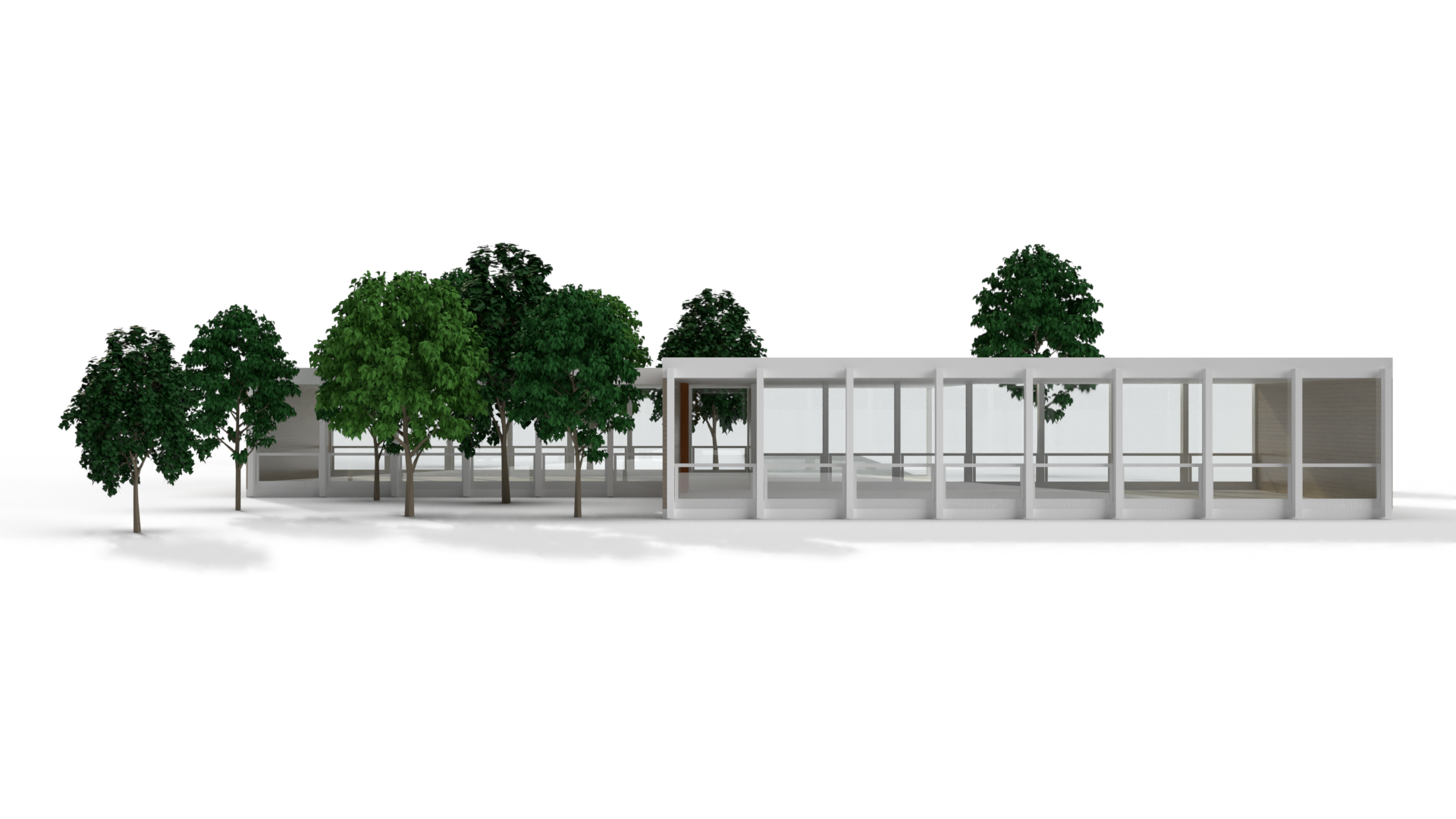
Fig 12: McCormick House, original west-facing elevation, 3D render. Note: the right-most bay was changed to hold the home’s utilities, and glass was eventually replaced. The original plot also held a large maple tree in front of the house on the left side of the image, out of frame.

Fig 13: McCormick House, original southwest-facing elevation, 3D render. Note: the left-most bay was changed to hold the home’s utilities, and glass was eventually replaced. See Fig 1.
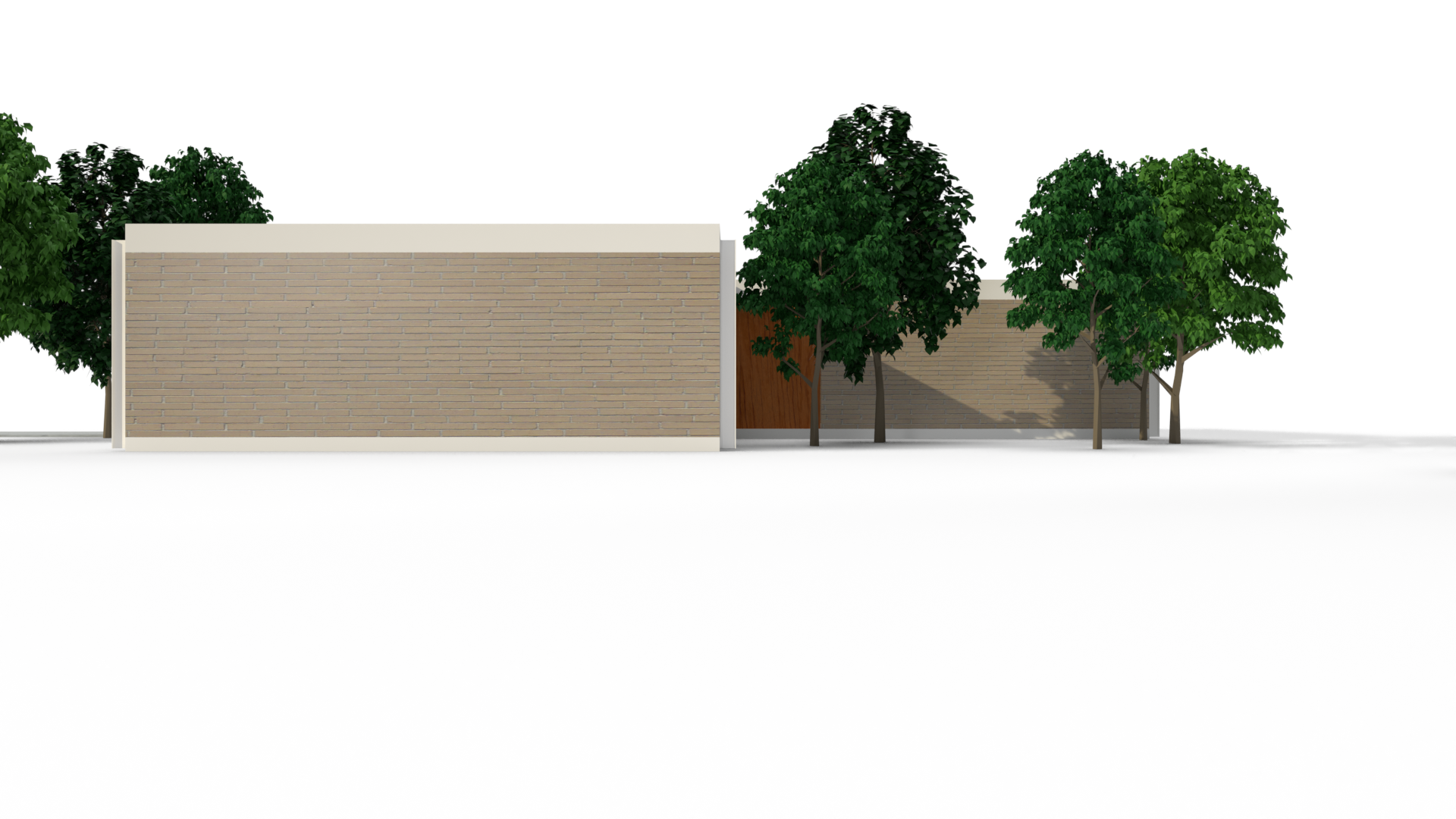
Fig 14: McCormick House, original north-facing elevation, 3D render.
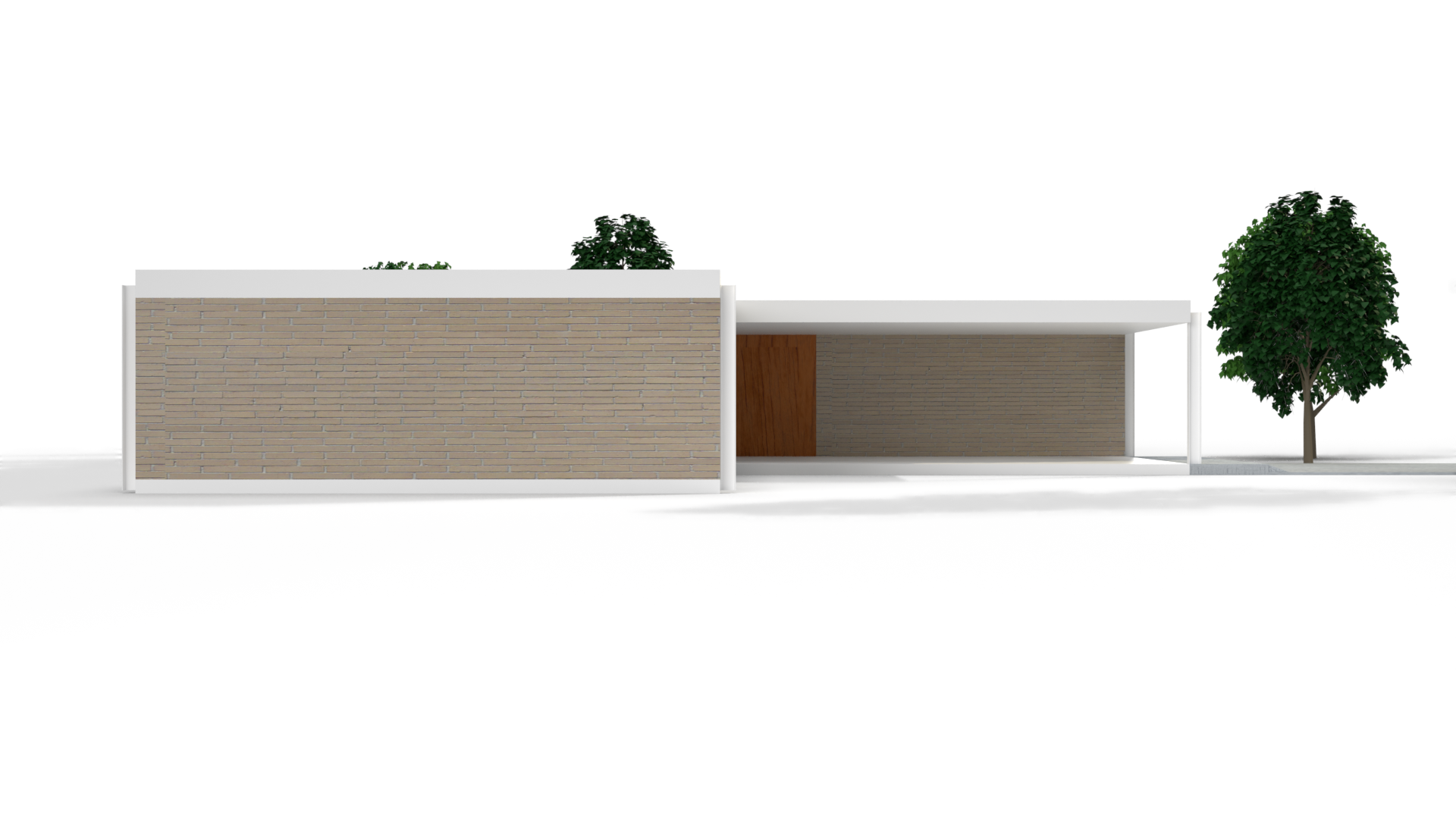
Fig 15: McCormick House, original south-facing elevation, 3D render. Note: in the original plan, a large maple tree would be on the right of this photo, halfway out of frame.
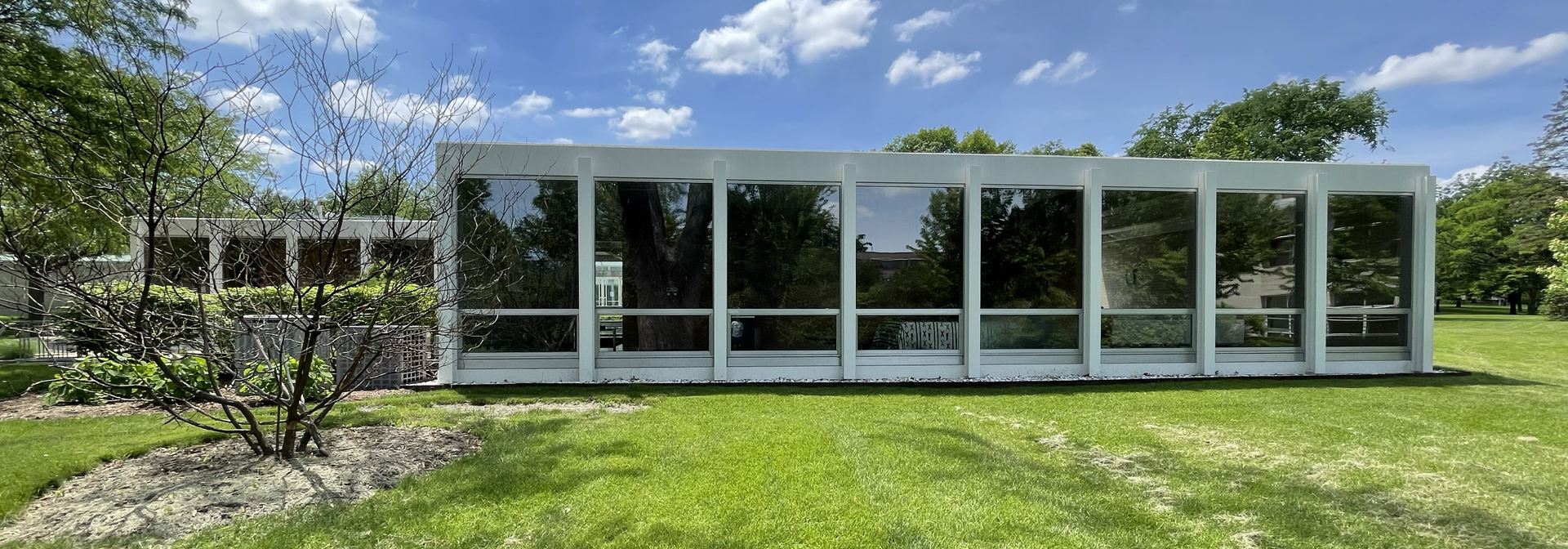
Fig 16: McCormick House, current north-facing elevation, 2022.
Bibliography
Alioto, Daisy. "Elizabeth Gordon's International Style" Curbed. May 10, 2017. https://archive.curbed.com/2017/5/10/15592658/elizabeth-gordon-house-beautiful-frank-lloyd-w right.
Bergdoll, Barry. Mies van der Rohe McCormick House. Elmhurst: Elmhurst Art Museum, 2018. Friedman, Alice T. Women and the Making of the Modern House: A Social and Architectural History. New York, NY: Harry N. Abrams, 1998.
Lynch, Patrick. "Mies van der Rohe's Other Illinois Home, the McCormick House, to Undergo Restoration," Arch Daily. July 13, 2017. https://www.archdaily.com/875045/mies-van-der-rohes-other-illinois-home-the-mccormick-hous e-to-undergo-restoration.
McCarter, Robert. Frank Lloyd Wright. London: Reaktion Books, LTD., 2006 "McCormick House," Elmhurst Art Museum. 2022.
https://www.elmhurstartmuseum.org/architecture/
McCoy, Esther. “Arts & Architecture Case Study Houses.” Perspecta 15 (1975): 55–73. https://doi.org/10.2307/1567014.
Schulze, Franz, and Edward Windhorst. Mies van der Rohe. 2nd ed. Chicago: The University of Chicago Press, 2014.
Tigerman, Stanley. “Mies van Der Rohe: A Moral Modernist Model.” Perspecta 22 (1986): 112–35. https://doi.org/10.2307/1567099.
Webber, Claudia. "150 South Cottage Hill Ave," 2019. https://www.150southcottagehillave.net/.
Image References
Fig. 1: McCormick House, view of front exterior. 1950s. Source: Hedrich Blessing Archive, HB15690B, Chicago Historical Society.
Fig. 2: Herbert Greenwald, Mies van der Rohe, and Robert McCormick studying a model of the McCormick House. Source: DPA/A0001_UPI
Fig. 3: 860-880 North Lake Shore Drive Apartments. Source: Marc Rochkind, CC BY-SA 4.0 via Wikimedia Commons
Fig. 4: Farnsworth House, Plano, Illinois, 2022. Source: Photo by Jeremy Hlinak
Fig. 5: McCormick House grid, 3D rendering. Source: Jeremy Hlinak
Fig. 6: McCormick House plot plan and section, 1951. Source: Artists Rights Society (ARS), New York / VG Bild-Kunst, Bonn
Fig. 7-15: Three dimensional renders based on plans Mies van der Rohe gifted to the Museum of Modern Art in New York. Created in Adobe, 2022. Source: Jeremy Hlinak
Fig. 16: McCormick House, current north-facing elevation, 2022. Source: Photo by Jeremy Hlinak
Annotations
1 Schulze, Franz, and Edward Windhorst. Mies van der Rohe. (2nd ed. Chicago: The University of Chicago Press, 2014), 27-29.
2 Schulze and Windhorst, Mies van der Rohe, 67.
3 Schulze and Windhorst, Mies van der Rohe, 121-125.
4 Schulze and Windhorst, Mies van der Rohe, 148-149.
5 Schulze and Windhorst, Mies van der Rohe, 153, 189.
6 Schulze and Windhorst, Mies van der Rohe, 180.
7 Tigerman, Stanley. “Mies van Der Rohe: A Moral Modernist Model.” Perspecta 22 (1986), 122.
8 Tigerman, A Moral Modernist, 122.
9 Friedman, Alice T. Women and the Making of the Modern House: A Social and Architectural History. (New York, NY: Harry N. Abrams, 1998), 139.
10 Schulze and Windhorst, Mies van der Rohe, 127.
11 Friedman, Women and the Modern House, 123.
12 Friedman, Women and the Modern House, 138.
13 Bergdoll, Barry. Mies van der Rohe McCormick House. (Elmhurst: Elmhurst Art Museum, 2018), 24. 14 Bergdoll, McCormick House, 22-24.
15 McCarter, Robert. Frank Lloyd Wright. (London: Reaktion Books, LTD., 2006), 144.
16 McCoy, Esther. “Arts & Architecture Case Study Houses.” (Perspecta 15, 1975), 55–73. 17 Bergdoll, McCormick House, 25.
18 Lynch, Patrick. "Mies van der Rohe's Other Illinois Home, the McCormick House, to Undergo Restoration," (Arch Daily. July 13, 2017).
19 "McCormick House," Elmhurst Art Museum. 2022.
20 Patrick, Restoration.
21 Bergdoll, McCormick House, 30.
22 Bergdoll, McCormick House, 36.
23 Elmhurst Art Museum, McCormick House.
24 Bergdoll, McCormick House, 2.
25 Patrick, Restoration.
26 Patrick, Restoration.
27 Bergdoll, McCormick House, 36.
28 Elmhurst Art Museum, McCormick House.
29 Friedman, Women and the Modern House, 140. 30 Schulze and Windhorst, Mies van der Rohe, 136. 31 Schulze and Windhorst, Mies van der Rohe, 302. 32 Patrick, Restoration.
33 Alioto, Daisy. "Elizabeth Gordon's International Style" Curbed. May 10, 2017.
34 Schulze and Windhorst, Mies van der Rohe, 301.
35 Patrick, Restoration.